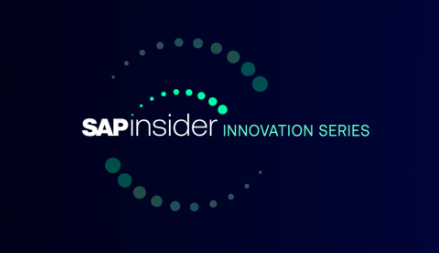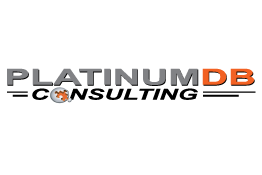SAP Cash Management
Filter By
Browse By
- SAP Analytics and AI
- SAP Application Development and Integration
- All SAP Application Development and Integration
- SAP ABAP
- SAP ABAP Development Tools
- SAP ABAP Test Cockpit
- SAP API Management
- SAP BAPI
- SAP Basis
- SAP BRF
- SAP Business Application Studio
- SAP CMS
- SAP Design Studio
- SAP Development Tools
- SAP DevOps
- SAP EAI
- SAP EDI
- SAP Extension Suite
- SAP Fiori
- SAP Fiori Elements
- SAP Integration Suite
- SAP Low Code Application Development
- SAP Low Code Automation
- SAP Netweaver
- SAP Release Management
- SAP UI5
- SAP Web Application Server
- SAP Web IDE
- SAP Business Process Management
- SAP Center of Excellence
- SAP CIO
- SAP Customer Experience
- SAP Data and Data Management
- All SAP Data and Data Management
- SAP BW
- SAP BW/4HANA
- SAP Crystal Reports
- SAP Data Archiving
- SAP Data Center
- SAP Data Governance
- SAP Data Integration
- SAP Data Migration
- SAP Data Quality
- SAP Data Services
- SAP Data Strategy
- SAP Data Visualization
- SAP Data Warehouse Cloud
- SAP DMS
- SAP Document Control
- SAP EIM
- SAP ETL
- SAP ETL Tools
- SAP HANA
- SAP HANA Administration
- SAP HANA Deployment Infrastructure
- SAP HANA Studio
- SAP Master Data
- SAP Master Data Governance
- SAP MDM
- SAP Enterprise Architect
- SAP Enterprise Asset Management
- SAP ERP
- SAP Finance
- All SAP Finance
- SAP Accounting
- SAP AR AP
- SAP Asset Accounting
- SAP Billing Systems
- SAP BPC
- SAP BRIM
- SAP Cash Management
- SAP Central Finance
- SAP Controlling
- SAP COPA
- SAP Cost Center Accounting
- SAP Currency Risk
- SAP e-invoicing
- SAP FICO
- SAP Finance Automation
- SAP Advanced Financial Closing
- SAP Financial Consolidation
- SAP Financial Planning
- SAP FX Risk
- SAP General Ledger
- SAP Global Tax Management
- SAP Hyperion
- SAP Order to Cash
- SAP Payment Processing
- SAP Profitability Analysis
- SAP Rebate Management
- SAP S/4HANA Finance
- SAP SWIFT Compliance
- SAP Treasury Management
- SAP Universal Journal
- SAP Governance Risk and Compliance
- SAP Human Capital Management
- SAP Intelligent Technologies
- SAP Platform and Technology
- All SAP Platform and Technology
- SAP Business Technology Platform
- SAP Cloud
- SAP Cloud Connector
- SAP Cloud Integration Platform
- SAP Cloud Migration
- SAP Cloud Platform
- SAP Cloud Providers
- SAP Cloud Strategy
- SAP Digital Signature
- SAP Container Platform
- SAP HANA Enterprise Cloud
- SAP Digital Asset Management
- SAP Smart Forms
- SAP HEC
- SAP Digital Integration Hub
- SAP Hyperscalers
- SAP Infrastructure
- SAP Messaging
- SAP Quality and Testing
- SAP Security
- SAP Spend Management
- SAP Supply Chain Management
- All SAP Supply Chain Management
- SAP APO
- SAP Asset Management
- SAP Business Network
- SAP Digital Manufacturing Cloud
- SAP Digital Twin
- SAP EWM
- SAP IBP
- SAP Inventory Management
- SAP Label Printing
- SAP Logistics
- SAP Manufacturing
- SAP Manufacturing Automation
- SAP MES
- SAP MII
- SAP MM
- SAP MRO
- SAP MRP
- SAP Order Management
- SAP Plant Maintenance
- SAP PLM
- SAP Production Planning
- SAP S&OP
- SAP SD
- SAP SPM
- SAP Supply Chain Planning
- SAP Track and Trace
- SAP Transportation Management
- SAP System Administration
What Is SAP Cash Management?
SAP Cash Management provides a comprehensive overview of an organization’s cash flow by processing and analyzing all cash and bank transactions. This includes payments for supplier invoices, sales receipts, stand-alone payments, and unallocated payments/receipts. SAP Cash Management also allows for analysis of financial transactions over a given period, providing vital insights into liquidity.
What Is SAP Cash Management?
SAP Cash Management provides a comprehensive overview of an organization’s cash flow by processing and analyzing all cash and bank transactions. This includes payments for supplier invoices, sales receipts, stand-alone payments, and unallocated payments/receipts. SAP Cash Management also allows for analysis of financial transactions over a given period, providing vital insights into liquidity.
For businesses looking to streamline their financial operations, SAP Cash Management provides critical functionality for managing cash flow, including analyzing financial transactions and ensuring on-time availability of funds. There are three components included in SAP Cash Management powered by SAP HANA: cash operations, liquidity management, and bank account management. These components allow organizations to streamline order-to-cash processes, improve liquidity, and enhance visibility into cash movements.
List SAP Cash Management core capabilities include:
- Managing bank account relationships
- Cash flow and liquidity reports with a comprehensive overview of your company’s financial position
- Maintaining accurate liquidity in the business
- Analyzing financial transactions for a given period
- Generating reports on cash position receipts and disbursements
- Automating payments and collections processes
Key Considerations for SAPinsiders
Consider SAP Cash Management needs as a part of a move to SAP S/4HANA. By leveraging SAP Cash Management with SAP S/4HANA, organizations can generate a complete view of cash position and liquidity, empowered by the modern technical architecture of SAP S/4HANA. The ability to track, trace, and reconcile payments in real-time provides enhanced visibility into cash movements, allowing businesses to better forecast and budget for future expenses. Finance and accounting managers can use this information to make informed decisions about cash management and ensure that adequate funds are available as needed.
Implement SAP Cash Management in SAP S/4HANA as a sidecar option to help determine a roadmap. In this interview with SAPinsider, Natasha Doerksen of Cameco talks about her company’s SAP Cash Management implementation journey.
Prioritize opportunities to lower costs and increase operational efficiency with cash management automation. The way companies are leveraging cash management, bank community, and banking communications to address issues such as lowering bank fees has become more complex. By automating cash management functionality, including payment processing and reconciling supplier statements, businesses can reduce the time and effort required to manage their finances.
479 results
-

- SAP ECC 6.0
 Premium
Premium
How to Comply with the Provisions of IFRS while Recording Capital Asset Transactions in SAP ECC 6.0
Reading time: 25 mins
Learn key adjustments that are required to make capital asset management compliant with International Financial Reporting Standards (IFRS). See the changes you need to make in SAP ERP Central Component (SAP ECC) 6.0 while transitioning from US Generally Accepted Accounting Principles (GAAP). Key Concept An organization needs to make adjustments in accounting for financial transactions...…
-

 Premium
Premium
Identify Fraud Risks with Forensic Audit Queries
Reading time: 23 mins
Audit committees, management, investors, regulators, and external auditors expect your business process controls to be effective, efficient, and testable. See how to extend your GRC functionality to identify control exceptions in your SAP system by locating data in SAP tables and running forensic audit queries. Out of the box, compliance solutions such as the SAP...…
-

 Premium
Premium
Enhance R/3’s Product Allocation Tool by Integrating It with APO’s DP and GATP Modules
Reading time: 26 mins
SAP R/3 and Advanced Planner and Optimizer (APO) provide several different ways to manage planning hierarchies for product allocation purposes, each with benefits and drawbacks. The author shows how to optimize product allocation in R/3 and presents examples of how R/3 integrates with APO’s Demand Planning (DP) and Global Available to Promise (GATP). Both SAP...…
-
-

 Premium
Premium
Demand Planning Alerts Increase the Accuracy of Your Forecasts
Reading time: 10 mins
One of the biggest problems facing demand planners is spotting trends and errors in large volumes of data. You can use the alert functionality in SAP APO Demand Planning module to spot discrepancies, allowing your demand planners to “manage by exception.” We explain the different ways in which you can use alerts to help create...…
-

 Premium
Premium
8 Steps to Document Controls for Sarbanes-Oxley Compliance
Reading time: 14 mins
As an operational specialist, you might not have as much experience documenting internal controls as your counterparts in finance. The author of this article provides a step-by-step approach for the operational side of the business and explains the differences among the different types of controls. Public companies registered with the Securities and Exchange Commission (SEC)...…
-

 Premium
Premium
Build and Implement a Rock-Solid Compliance Framework for Your IFRS Conversion Project
Reading time: 24 mins
Many countries already operate under International Financial Reporting Standards (IFRS), while the US, among other countries, may be joining the fray. To simplify the conversion from your local reporting standard to IFRS and better manage the associated compliance risk, organizations must adopt strategies and best practices based on a proven compliance framework. Key Concept A...…
-

 Premium
Premium
Integrate Payment Cards into Your SAP Financial Supply Chain
Reading time: 8 mins
Starting with R/3 Release 4.0A, you can integrate payment card functionality into your SAP system. Avoid mid-project surprises by reviewing the process and specific system requirements. Key Concept The cross-application Payment Card Interface is available in SAP R/3 in releases 4.0A and above, including the latest mySAP ERP release. In addition, other SAP products such...…
-
-

 Premium
Premium
Understanding and Managing Payroll Retrocalculations
Reading time: 41 mins
One of the most complicated aspects of R/3’s Payroll functionality is the concept of retrocalculations. It’s complex, no getting around that. However, if you understand the basics, you can use that knowledge to figure out what happened to cause the retrocalculation, and what the retrocalculation changed. One of the most complicated aspects of R/3’s Payroll...…
-

 Premium
Premium
Fast Track Your Document Migration into Solution Manager
Reading time: 12 mins
ManagerMany organizations want to migrate to using Solution Manager for implementations. As part of this migration, projects often face the challenge of how to get their existing documentation into their Solution Manager system without having to upload documents one at a time. Solution Manager offers a utility that can help by loading business process hierarchy...…
-

 Premium
Premium
Adapt and Automate SAP Dispute Management
Reading time: 16 mins
Understand the concept of case records in the context of SAP Dispute Management and learn how to adapt the layout of a dispute case. Look into the implementation of Business Add-Ins within SAP Dispute Management to set up automatic follow-up activities such as determining the next processor of a dispute case. Key Concept SAP Financial...…
Become a Member
Unlimited access to thousands of resources for SAP-specific expertise that can only be found here.
Become a Partner
Access exclusive SAP insights, expert marketing strategies, and high-value services including research reports, webinars, and buyers' guides, all designed to boost your campaign ROI by up to 50% within the SAP ecosystem.
Upcoming Events
Related Vendors
Your request has been successfully sent


